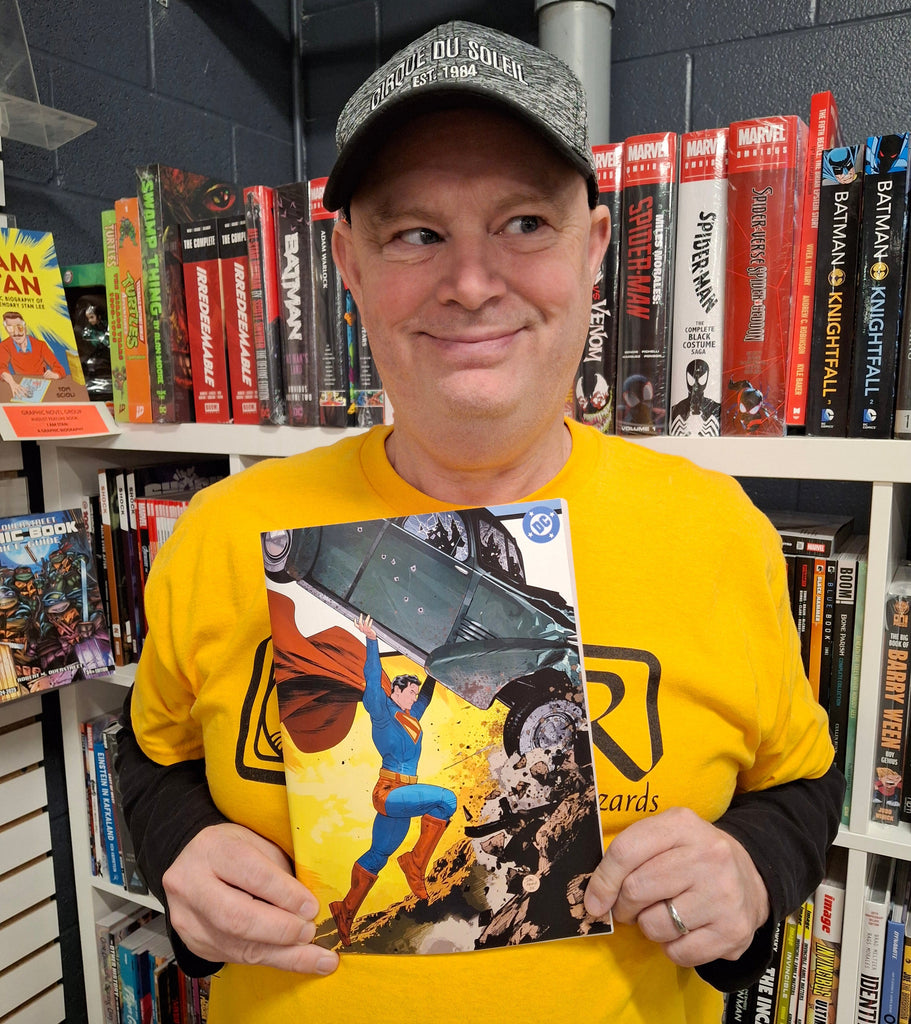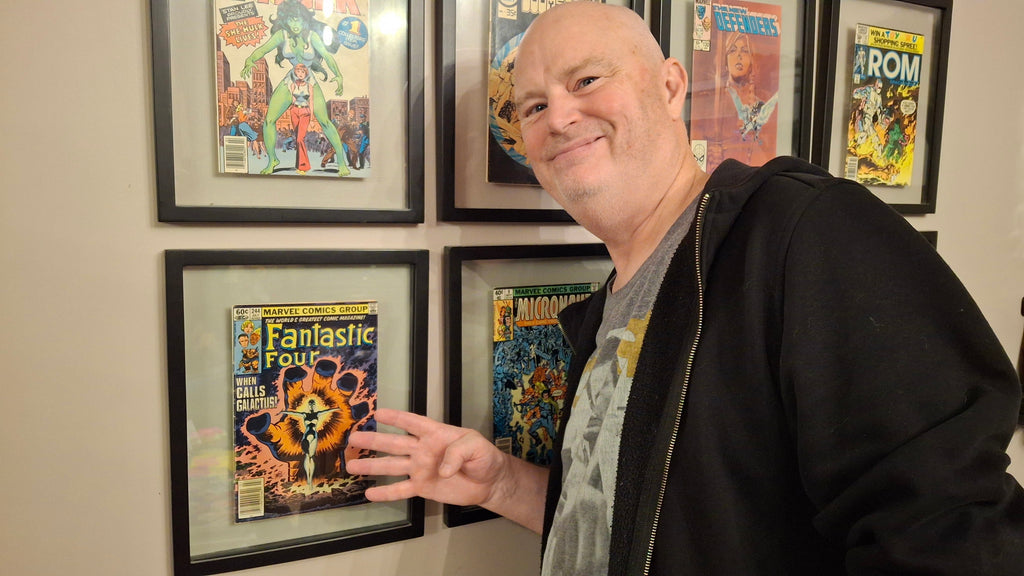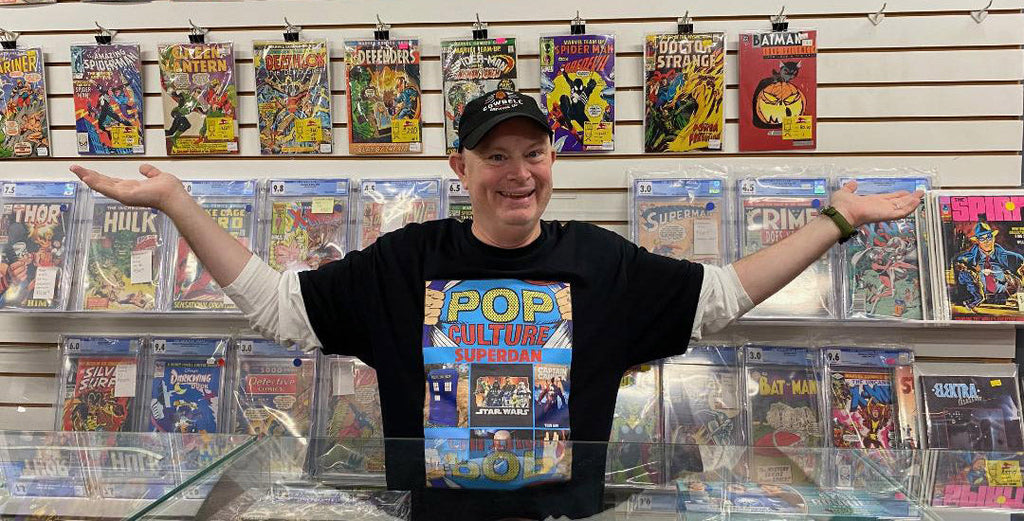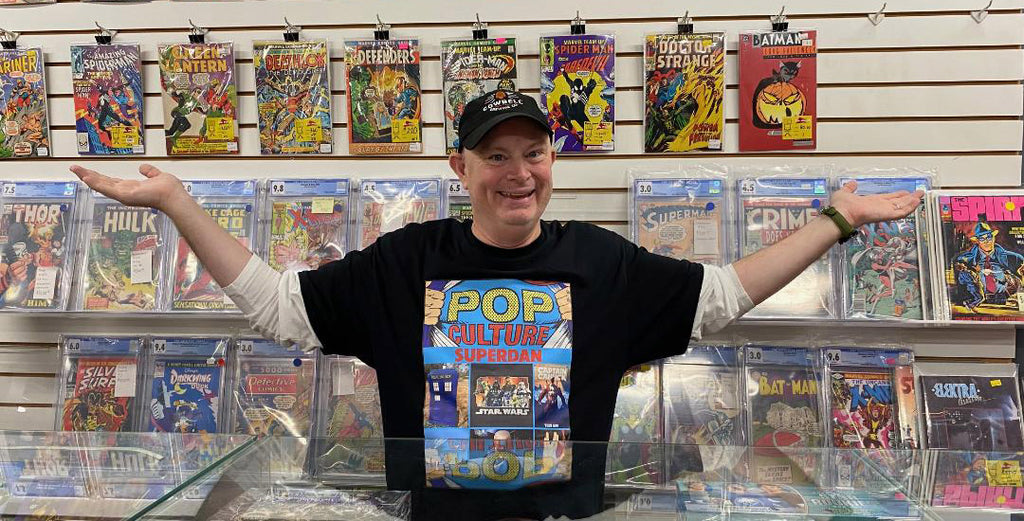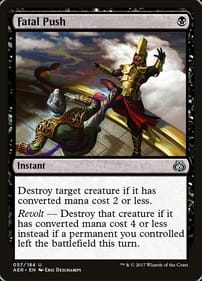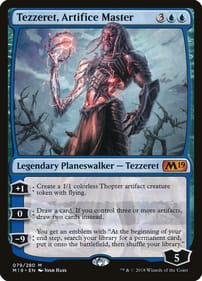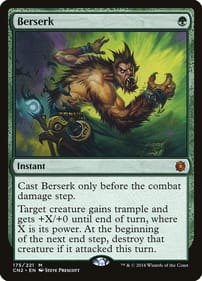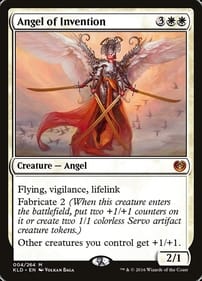Are We Over Origin Stories?
By Dan Brown SPOILER WARNING! This column contains plot points from the movies Fantastic Four: First Steps and Superman, both currently in theatres, so if you haven’t seen them yet and you value surprise, stop reading here. Is this a trend in the making? If you’ve seen this summer’s big superhero movies – I’m thinking of The Fantastic Four: First Steps and Superman specifically – you may have noticed something essential was missing from both motion pictures. The secret origin. Traditionally a staple of superhero movies, and the comics that spawned them, most DC and Marvel comic series have a common starting point. They explain up front, to satisfy the audience’s craving for continuity, how the hero came to possess their unusual abilities. How they go from mere mortal to crime-fighting powerhouse. So up until now, the launching-off point for these stories was the origin. In the 1978 Superman film, for example, a significant portion of the first hour is given over to showing life on Krypton before it exploded, including details about Kryptonian politics that wouldn’t pay off until Superman II. We see the future Clark Kent as he is dispatched from the doomed planet, years before he would don his red-and-blue costume to do battle with the likes of Lex Luthor. It’s the same with other superhero movies, such as 2002’s Spider-Man. That film, and the reboots that followed, gave viewers a good look at the events that birthed the title character. This summer’s Superman, however, does not start the same way. Krypton is never depicted, in fact, the movie jumps ahead to the point on the Superman timeline when Clark is dating Lois, and she already knows his secret identity. The same goes for First Steps. The story kicks off four years after Reed Richards and his crew of astronauts were bathed in cosmic rays, giving them weird powers. The movie begins not with their origin, but with Sue Richards finding out she’s pregnant with the couple’s son, so it’s Franklin’s origin that’s stressed. Neither film dwells on the secret-origin part, which is a startling development when you take into account how many filmmakers have felt obliged to put, say, Batman’s secret moment of inception on the silver screen. Sometimes it feels like Bruce Wayne’s parents will never get out of that alley, and Peter Parker has been bitten by an infinite number of radioactive spiders. In comics, there’s been much experimentation with this storytelling staple. Consider that in Action Comics No. 1, the Man of Steel’s origin was related in one page. Then compare that to the 1987 Batman: Year One storyline, which explained the Dark Knight’s beginnings over four issues. The makers of Captain Canuck waited until issue No. 5 to reveal to fans how Tom Evans had been zapped by an alien ray, doubling his strength. At their root, secret origins satisfy the reader’s need for continuity by explaining what happened before the first issue and answering the question, “Why does Batman hate criminals so much that he wages an unending war on them?” to name one example. Marvel impresario Stan Lee, perhaps weary after having to come up with so many origin stories in the 1960s, invented a whole class of characters – mutants – who had no origin story. X-Men like Cyclops, Marvel Girl, and Iceman were all born that way. The telling part is while some movie reviewers noticed what was missing from First Steps and Superman, none have complained that the omission made either of these films worse. Judging by online comments, ordinary fans don’t seem to mind, either. Have we reached some kind of watershed moment in the history of the superhero genre? Has fandom gotten over origin stories? The critical consensus seems to be that, after a period of lacklustre DC and Marvel films, this summer’s superhero offerings have reversed the downward trend in quality. Are moviegoers in 2025 more sophisticated than previous audiences? Are we witnessing the birth of something new? If you have any theories, I'd love to hear them in the comment box below! Dan Brown has covered pop culture for more than 32 years as a journalist and also moderates L.A. Mood’s monthly graphic-novel group.
A Fantastic Four Primer
By Dan Brown This column is for those readers who are considering going to see The Fantastic Four: First Steps but don’t know a lot about comics lore. Here’s your primer from an old FF fan. But be warned – I haven’t seen the movie (it lands in theatres Friday), so I can’t tell you exactly how much it differs from the comics. The first issue of Fantastic Four came out in 1961, and is generally considered the launching point for the Marvel Universe. It caused a sensation, making the rest of the Marvel lineup possible. Such heroes as Spider-Man and teams like the Avengers followed in the wake of the FF’s success. The title had a sci-fi flavour and introduced (or at least popularized) a number of superhero innovations. The main characters were Reed Richards, whose pliable mind is matched only by his elastic body; Sue Storm, who is Reed’s transparent wife, and is also able to project force fields; the hothead Johnny Storm, who can burst into living flame; and Ben Grimm, Reed’s college buddy, who looks like a pile of orange rocks. One of the main innovations is that while the FF have superhero names (Mister Fantastic, Invisible Woman, the Human Torch, the Thing), they do not have secret identities. Originally a group of astronaut explorers, they operate with the general public knowing their real identities. From the movie clips I’ve seen online, it looks as though the new film’s makers are leaning heavily into the FF’s status as a family. This is what sets them apart from other superhero teams like, say, the X-Men. And while they do have uniforms, they wear them only on the job. Another innovation is, as with so many families, the Fantastic Four is a dysfunctional one. Although Reed is the FF’s leader, they are constantly squabbling about something. This tension exemplified Marvel’s new breed of superheroes with real-world problems. This was all in contrast to DC’s emotionally constipated heroes – Superman and Batman among them. It was the brand difference that eventually put Marvel on top of the comics sales charts. The FF got their powers after a freak rocket accident. These aren’t necessarily considered a blessing, particularly by Grimm, who is a self-loather. The reluctant superhero was a relatively new concept at the time. Their adventures were cosmic in scope, and thanks to co-creator Jack Kirby’s pencil work, had a trippy vibe to them. The enemies they fought include Annihilus, ruler of a dimension called the Negative Zone. And the Sub-Mariner, who lorded over the Earth’s oceans. Doctor Doom was an old college rival of Mister Fantastic who had mastered the mystic arts en route to inventing a time machine. No villain better demonstrates the raison d’etre of the FF than Galactus. More than merely evil, Galactus is a planet-eater whose existence as a force of nature puts him beyond human morality. Our heroes have cheated him out of devouring Earth many a time. Again, judging from clips on the web, it looks as though Galactus will be the main adversary appearing in the new motion picture. Another innovation has the FF living in a real city, New York, not an anonymous one created for the comics. Kirby’s run as penciller on Fantastic Four ended after almost a decade. Since then, different artists have worked on the title, including sometime Canadian John Bryne whose time as FF artist/writer is considered by many to be second in importance only to Kirby and Stan Lee’s run. The team has had substitute members over the decades, always returning to the same core foursome. The comic, similar to any long-lived title, has had its creative ups and downs. There have, you may have heard, been previous Fantastic Four movies – none of them all that great. I thought the 2005 adaptation was a solid B movie, but suffered from how cheaply it was made. How low was its budget? They didn’t even have enough money to pay for the effects showing Grimm transforming into the Thing. Talk about made on the cheap. Dan Brown has covered pop culture for more than 32 years as a journalist and also moderates L.A. Mood’s monthly graphic-novel group.
Gene Hackman’s Lex Luthor Makes Me Despair for the New Fantastic Four Movie
My purpose here isn’t to praise Gene Hackman’s acting skills, which were superlative, it’s to explain why his turn as Superman’s nemesis makes me itchy about the upcoming Fantastic Four movie. You likely heard Hackman had died. Since the news broke last week that his body had been discovered, there has been much discussion online about his greatest performance. Some argue he was at his peak in Hoosiers. Others say his most impressive turn came in The French Connection or Unforgiven or The Royal Tenenbaums. There’s so much to choose from. But for comic fans of a certain vintage, Gene Hackman will always be Lex Luthor.Starting in 1978, he played the crafty villain in three of the Superman movies that featured Christopher Reeves in the title role. Hackman brought a special blend of arrogance and charm to his version of the criminal mastermind, chewing scenery in a way that communicated to us young nerds that he was having a ton of fun inhabiting the bald bad guy. Wait, I just told you a lie. Yes, Lex Luthor is bald. But not when Hackman played him. And even though I wasn’t the biggest DC fan in the world, I understood enough of the Superman mythos to know that in the comics, Luthor had no hair. Heck, in some continuities Lex hates Supes because he blames the Kryptonian immigrant for his lack of locks. Hackman may have been an Oscar-calibre actor, but 10-year-old me just could not get past the hair. For whatever reason – perhaps the Superman producers wouldn’t pay him enough to shave his entire head – Hackman kept his own hair in those films. My educated guess is he didn’t want to go hairless, and since he was a big star his wishes were accommodated. What does this have to do with The Fantastic Four: First Steps, which is slated to land in theatres on July 25? Well, Hackman isn’t the only one with the requisite star power to avoid the barber’s blade. You can draw a line directly from Hackman to Pedro Pascal, who plays Mister Fantastic in the FF film. In the trailers and publicity photos we’ve seen so far, Pascal appears with his moustache intact. I fear the folks at Marvel Studios are humouring the Chilean-born actor by not demanding he shave. Granted, it’s a great moustache. For Pascal the celebrity. Not for Reed Richards the cerebral hero. As any fan of the Fantastic Four comics know, the FF leader is clean-shaven – with flecks of grey in the hair above his ears. That’s been his look, more or less, since the Marvel Age was launched with the publication of Fantastic Four No. 1 in 1961. It’s true in a handful of stories Reed is pictured with a beard. He has never, however, been one to rock a 1970s-style stache, no matter which artist is drawing him. Reed is a serious guy, not given to vanity, which is why in all the big-screen adaptations to date, he is free of facial hair. So you can see the problem: Hackman set a precedent that Pascal is following, and it’s got me worried I won’t be able to see past the whiskers when July rolls around. I agree bringing Pascal into the Marvel fold was a good idea. And who knows, there’s so much we don’t know about the FF movie. Maybe the stache disappears at some point in the film. Or perhaps this is a Sonic the Hedgehog situation and the production team will remove the facial hair using CGI before First Steps is released because fans like me are upset. If the producers want a really cool way to get rid of it, have Reed’s brother-in-law, the Human Torch, laser off the moustache the same way he gave the Submariner a shave and haircut way back in Fantastic Four No. 4. Or have Galactus blast it off. Or maybe it comes off when the FF joins the main Marvel Cinematic Universe, as is rumoured. There’s no question both Gene Hackman and Pedro Pascal ooze charm on the big screen. But just as I could not accept a Lex Luthor with a full head of hair back then, I won’t accept a Mister Fantastic with a bushy moustache this summer. No matter how much the Marvel brain trust needs for the FF movie to be a winner at the box office. Dan Brown has covered pop culture for more than 32 years as a journalist and also moderates L.A. Mood’s monthly graphic-novel group.
The Marvel Universe: An appreciation
By Dan Brown Did you ever have one of those posters showing all the Marvel superhero characters gathered together in one place? Over the decades, successive generations of Marvel artists have depicted that crowded scene – row after row of colourful do-gooders, a cast of literally thousands, standing at the ready to fight evil.. Whether this heroes’ gallery was drawn by Jack Kirby, John Byrne or Michael Golden or someone else, my jaw hits the floor every time I see it. I am in awe of the creative energy it must have required to come up with backstories and costumes for all of them. So what I want to do this week is take a moment to praise the folks at Marvel for doing such a good job of churning out one interesting character after another since 1939. This will come as no surprise to regular readers who know I was raised on Marvel Comics in the 1970s. (And don’t worry, DC fans, I’ll do a tribute to that company’s stable when I figure out the right way to do it.) When it comes to being prolific, no other comic publisher has the track record Marvel does. What a riot of invention! What a unique assemblage of talent! What a big bang of creativity that set and kept the Marvel Universe in motion! The Marvel Universe is what results when the right talented people get together and are allowed the freedom to let their minds wander. It’s an example of what no less an authority than Willy Wonka calls “pure imagination.” Jack Kirby and Stan Lee – who launched such comics as the Avengers, the Fantastic Four, the Incredible Hulk and the Uncanny X-Men – were undeniably the creators among creators at Marvel. I don’t want to get too much into the weeds on the question of which man possessed the real vision, so let’s just state for our purposes here today that Kirby and Lee combined are among the greatest and most prolific American originators of characters, in the same league as Walt Disney, Jim Henson, Dr. Seuss and Mark Twain. It’s true the different creative teams at Marvel were motivated by economic necessity. They never met a trend they didn’t try to plunder, like the disco craze. No sooner, it seemed, had Studio 54 opened than Marvel came up with the mutant Dazzler – who has all the powers of a disco ball! When kung fu movies likewise hit it big, Marvel answered with Shang-Chi and Iron Fist. Sometimes the plundering was done for the right reasons, as when characters like Black Panther and Power Man were devised to give black readers heroes of their own. Although some fans have by now grown weary of the offerings from Marvel’s movie division, the studio hasn’t even begun to scratch the surface of the vast library of characters it owns. No one would call the comic-book Agatha Harkness a major Marvel character, but there’s currently an entire series streaming right now devoted to her solo adventures. A series about Wonder Man – another B-list character – is set to debut next year. As someone who appreciates and values imagination, I can’t help but be deeply impressed by how productive Marvel has been over the decades, creating a surplus of diverse characters who have now become recognized around the world. And yes, the chumminess of the Marvel Bullpen was likely an illusion created by Lee to help infuse the Marvel brand with an air of fun, but at the end of the day we are still left with what all of those artists, writers, colourists, letterers and editors wrought: An entirely original group of compelling heroes. There’s literally a character for everyone. I stand in awe. Dan Brown has covered pop culture for more than 31 years as a journalist and also moderates L.A. Mood’s monthly graphic-novel group.
Deadpool & Wolverine Isn’t a Sure Bet
The superhero combo may not be able to win over movie goers according to Dan Brown. He explains how movie trends, ratings, and more won't help the studio in this week's column,
Read The Story

